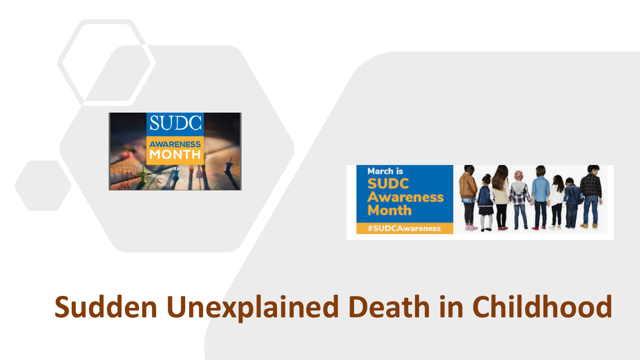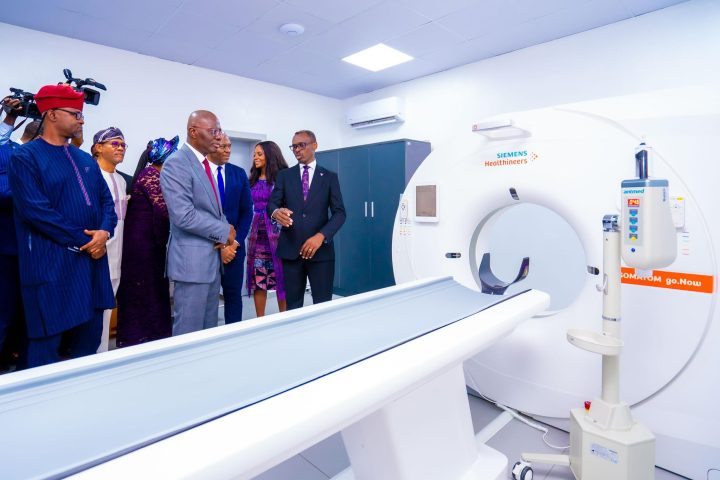By Dr Gabriel Uguru
Join our WhatsApp Channel
Sudden Unexplained Death In Childhood (SUDC) could be due to genetic variations.
Before we go further, there are certain terms we must be familiar with, and which will occur repeatedly as we progress in our discussion. These are:
SUDC: Sudden Unexplained Death in Childhood
SIDS: Sudden Infant Death Syndrome
SUDEP: Sudden Unexpected Death in Epilepsy
SUDP: Sudden Unexpected Death in Paediatrics
SUDC and SIDS: Are conceptualised together as SUDP.
Picture this scenario, Mrs Ojo’s 18 months old baby boy was healthy and full of life. She has just fed him and later played with him before placing him on the bed to sleep. She remained with him and watched him lovingly as he breathes gently, and when he finally falls asleep, she tiptoes out of the room so as not to wake him. Thirty minutes later when she comes back to check on him, she finds him not breathing and unresponsive. The child has died in his sleep!
Depending on your religious or lack of religious beliefs, you will say it is the will of God, or that Mrs Ojo is a witch or if she has had a quarrel with her neighbour, the neighbour has used “juju” or black magic to kill the baby. But all the above insinuations are wrong! The child died of what in medical terms is called sudden unexplained death in childhood (SUDC) syndrome. The term is used to describe the sudden death of a child aged between 1 and 18 years that is unexplained after a thorough complete autopsy reports, police investigations and clinical history. In most cases, SUDC occurs in infants aged between 1 and 4 years with inconclusive cause of death recorded.
Sudden unexplained death in childhood (SUDC) is at times confused with another condition called sudden infant death syndrome (SIDS). This syndrome sometimes called “cot death” is the sudden, unexpected and unexplained death of an apparently healthy baby aged under 12 months. This usually occurs in the first 6 months after birth of a baby, and is more common in baby boys than girls.
The theory is that SUDC and SIDS are part of a sequence or rather are continuum. Children who died of SIDS were they not to have died of the syndrome would have died of SUDC or at best would have had high probability of dying of SUDC in later life. Many cases of SUDC involve children with a history of febrile seizures (convulsions or fits associated with fevers).
The scenario with Mrs Ojo’s baby plays out in many countries throughout the whole world. In the US alone, there are 1,400 cases of sudden infant death syndrome (SIDS) annually, compared with only 400 SUDC. Therefore, much emphasis and resources are devoted to SIDS while SUDC remained under the radar; consequently research into the condition is rather limited.
READ ALSO: Mining For Golden Urine
Sudden unexplained death in childhood (SUDC) most times is accompanied by a history of febrile seizures in some children, and their family members. In such cases correlation is drawn between SUDC and sudden unexpected death In epilepsy (SUDEP). This syndrome is defined as the “sudden, unexpected, non-traumatic, non-drowning death in an individual with epilepsy, witnessed or unwitnessed, in which the postmortem examination does not reveal an anatomical or toxicological cause for the death”.
A study carried out by Matthew Halvorsen and coworkers, which was published in the Proceedings of the National Academy of Sciences (PNAS), in December of 2021; linked SUDC to some genetic risk factors. Genetic data from 124 decedents (death victims) of SUDC aged between 11 months and 19 years, and their both parents were analysed. Data accumulated from whole-exome sequencing (WES) were used for the analysis (exomes are that part of the human or eukaryotic genome containing exons, which code information for protein synthesis, or simply put, the protein or peptide coding regions of a DNA or RNA molecule).
Halvorsen and coworkers searched for mutations associated with epilepsy and cardiac disorders. They discovered mutations in 8 genes which were linked to 11 deaths. These mutations were de novo (i.e. they were new) and only present in the child and not found in both parents. Six out of the eight mutations occurred in genes associated with calcium-signalling, affecting the flow of ions across cellular channels. Calcium signalling is important in the regulation of many processes, which include muscle contraction, gene transcription, neuronal communication, and heart contractions. Thus, loss of gene function in calcium-signalling pathway is a major factor in sudden unexplained death in childhood.
Also mutations in another gene identified as CACNA1C, have been linked to a rare disorder called Timothy syndrome, which is associated with calcium abnormalities. The condition affects the heart, limbs, muscle, and the nervous system.
Due to the high frequency of febrile seizures seen in many SUDC reports, the researchers were predisposed to place epilepsy genes as contributory factors to death in some SUDC cases; especially as mutations were seen in a gene called SCN1A, which is known to be involved in epilepsy.
The study further highlighted the fact that some cardiac and brain genes overlap each other. And because many ion channel and calcium regulatory genes are expressed in the heart and brain areas; therefore, patients with cardiac gene mutations have increased rates of neurological disorders like epilepsy and delay in neuro-development.
In a related study published in Genetics in Medicine by Koh and coworkers; the researchers conducted whole-exome sequencing (WES) on 352 samples obtained from decedents (or death victims) of sudden unexpected death in paediatrics (SUDP) i.e. from both SUDC and SIDS (sudden unexpected death in paediatrics is used here to mean combined effects of sudden unexpected death in childhood and sudden infant death syndrome, respectively). The researchers included in their studies sequence samples from 73 parents of decedents of SUDP. They searched for variants (mutations) in 294 genes associated with cardiac defects, neurologic abnormalities, and metabolic dysfunction.
The researchers identified variants strongly suspected of contributing to 37 deaths. Interestingly, two of these variants occurred in genes linked to neurodevelopmental disorders but not with sudden death, suggesting previously unknown contributory consequence of neurodevelopmental disorders to sudden deaths in children and infants. Taken together, the study highlights the roles played by many neurologic, cardiac, and metabolic mechanisms in sudden unexplained death in children and infants.
Routine screening of newborns for dangerous genetic mutations could in most cases detect the presence of these SUDC gene factors, and preventive measures taken to manage the situation. For example metabolic disorders may cause sudden death in children. They are rare inherited disorders, which make it difficult for the body to turn food into energy. Genetic screening in children can easily detect the conditions, and appropriate remedial measures adopted.
Sudden unexplained death affects everyone regardless of age and socioeconomic groups. Preventative measures include reduction in environmental factors, especially infants should not be allowed to sleep in unsafe environments like overcrowded and poorly ventilated rooms. Babies with medical conditions like sleep apnea (periods of not breathing), and slow heart rate could be treated upon diagnosis to reduce the risk of SUDC.
“The prevailing etiologic [causative] model of SUDP postulates that modest extrinsic [external] threats become fatal in infants and children who harbor [harbour] intrinsic [internal] vulnerabilities. Early research described intrinsic vulnerabilities as biologically mediated risk factors such as prematurity, male sex, and prenatal alcohol and/or tobacco exposure.” _Koh, et al. (2022) Genetics in Medicine.
Below are some recommendations by SUDC Foundation, USA:
1. Keep your baby’s sleep area close but separate from where you and others sleep. Your baby should not sleep in a bed or on a couch or armchair with adults or other children, but he/she can sleep in the same room as you. If you do bring your baby into bed with you to breastfeed, put him/her back in their separate sleep area, such as a bassinet, crib or bedside co-sleeper (infant bed that attaches to adult bed) when finished.
2. Do not let your baby get too hot. Temperatures that are comfortable for you are best for your baby.
3. Dress your baby like you dress yourself. If it is hot outside, and you are wearing cool clothing, dress your baby in cool clothing as well. This is less important after one-year of age.
4. Keep your baby’s room at a temperature that is comfortable for an adult.
5. Breastfeed your baby if possible. Human milk has a number of health benefits for your baby.
6. Recent studies have shown a decreased risk of SIDS among babies who use pacifiers [dummies]. Think about using a clean, dry pacifier when placing your infant down to sleep, but don’t force the baby to take it or reinsert it once the baby falls asleep. If you are breastfeeding, wait until your baby is 1 month old or is used to breastfeeding before using it [pacifier].
“These recommendations have been shown to reduce the risk of SIDS in all infants. Therefore, we recommend them for siblings of SUDC children as well.” – SUDC Foundation.
Given the fact that the identified gene variants seen as contributory factors to sudden unexplained death in childhood (SUDC) were not in any way inherited from the parents, the burden of guilt often felt by parents that they might have passed a dangerous gene variant (mutation) to their children, is now removed.
However, the discovery of these gene variants is expected to lead to more accurate genetic testing for SUDC, as well as expand the range of potential options for future genetic therapy for SUDC and associated syndromes.


















Thank you Gabriel again for the interesting article. I recommend everybody to read this article if they expect children or want them in a later stage.